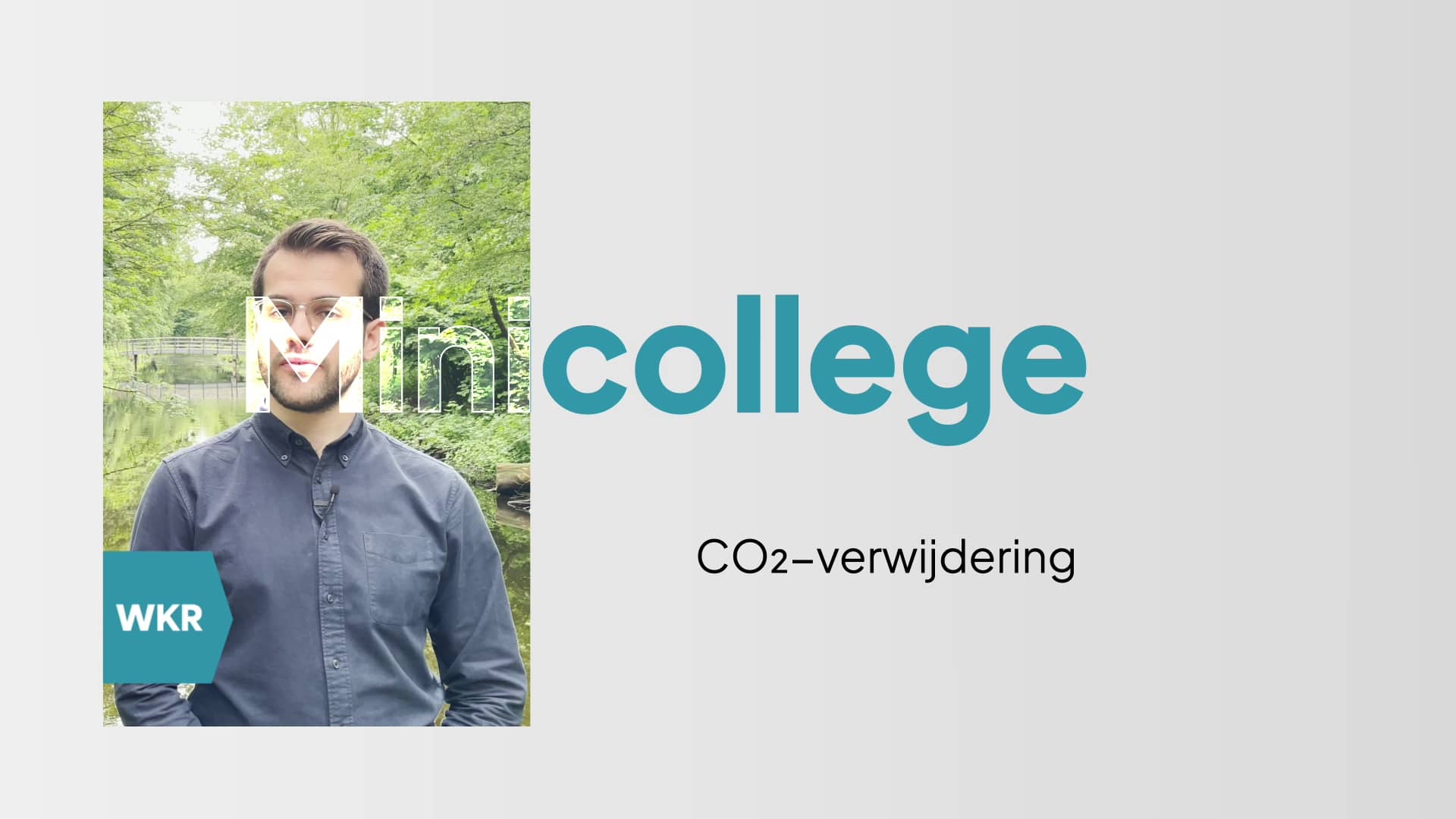Active government intervention is needed to realise carbon dioxide removal (CDR) from the atmosphere. Maximum commitment to reducing greenhouse gas emissions must remain paramount. But in addition, CDR is necessary to achieve climate neutrality and to limit an overshoot of the 1.5°C limit. CDR does not come off the ground by itself on a sufficient scale and it takes a long time to realise. It is therefore necessary to start with CDR policymaking now. This is one of the main recommendations in the recently published advisory report of the Netherlands Scientific Climate Council (WKR): "Clearing the Air?".
Image: © WKR
The Dutch greenhouse gas emissions must be reduced to zero as soon as possible. That way, the Netherlands makes a fair and responsible contribution to the climate targets. Emission reduction is necessary to prevent the worst consequences of climate change, such as extreme weather and rising sea levels. It is scientifically proven that CDR, which involves long-term sequestration of CO2 from the atmosphere, is necessary to achieve the climate targets. First, because the world is likely to overshoot the 1.5 target in the near term, and CDR can lower the temperature. It is also necessary because for some emitters it is impossible to reduce their emissions to zero. This is the case for example for parts of agriculture or aviation. To achieve climate neutrality, the residual emissions from such sectors must be counterbalanced by removing CO2 from the atmosphere.
Although CDR is necessary, the Council cautions that the focus on CDR should not come at the expense of reducing emissions. CDR has significant costs, and large land and energy use, which severely limit its opportunities. CDR on a large scale can cause other social issues, such as nature and health, to be compromised. Responsible policy therefore puts maximum effort into emissions reduction, keeping dependence on CDR small.
Focus CDR policy on permanent CDR
The WKR distinguishes between temporary CDR, where the carbon may be released on a time scale of decades, and permanent CDR, where the carbon is sequestered for at least centuries. Many of the Dutch emissions are from fossil origin: the carbon was sequestered millions of years ago. These fossil emissions should therefore be offset only with permanent, not temporary, CDR. Therefore, the Council recommends focusing Dutch CDR policy on permanent methods.
Start with a procurement programme
To get permanent CDR off the ground, the Council recommends launching a Dutch government-led procurement programme. This will allow the Netherlands to stimulate the scale-up of CDR and quickly gain experience with various methods of permanent CDR. Unlike other policy options for creating demand for CDR, a procurement programme can be introduced relatively quickly.
Take the lead at the European level
It is in the interest of the Netherlands that proper arrangements on CDR policy are quickly made at the European level. Some of the Dutch sectors find it difficult to reduce their emissions to zero. Besides the Netherlands has a relatively large potential for underground CO2 storage under the North Sea bed. So, the Netherlands not only has an interest in good a CDR policy, but also the position to benefit from it. Moreover, a European CDR policy ensures equal treatment of emitters and prevents relocation of economic activities to countries with less stringent requirements.
"Clearing the Air?”
In this advisory report, the Council discusses the role that CDR plays in climate policy. How can Dutch the government steer the development of CDR and what principles can it adopt for this purpose? The Council publishes this report right now in order to offer the new Dutch government tools for good climate policy to achieve the 2050 climate targets. The Council also emphasizes the urgency of picking up the gauntlet now and making responsible choices so that the next generation will not be faced with trillions of euros of CDR costs.
Watch our mini lecture on CDR
Activate the English subtitles below the video by pressing the "CC" button.

About the Netherlands Scientific Climate Council (WKR)
The WKR is tasked with delivering science-based, strategic climate policy advice for the Dutch government and parliament, both solicited and unsolicited. The WKR works independently and interdisciplinary, and mainly focuses on the long term in their advice reports.